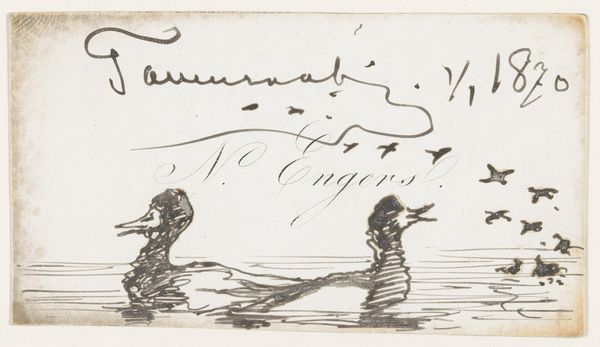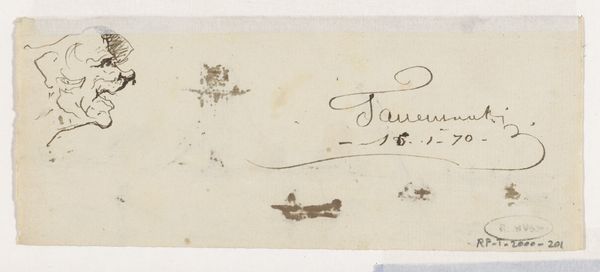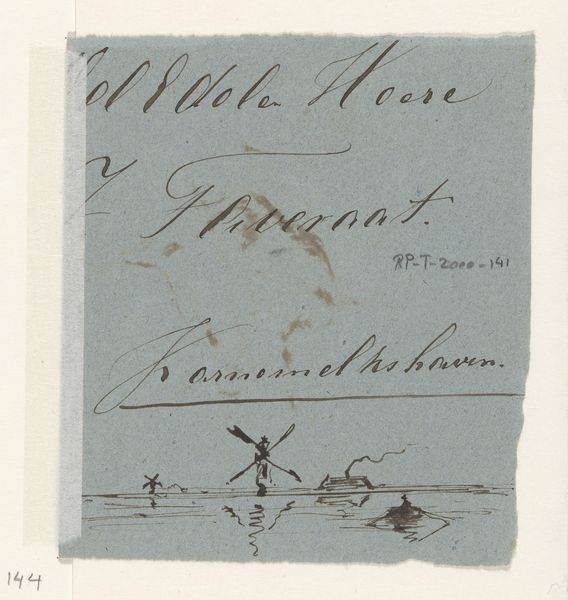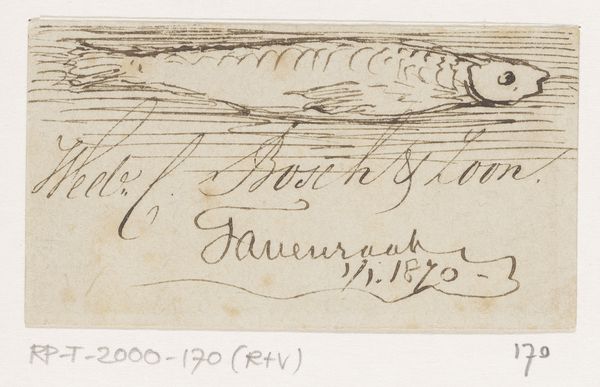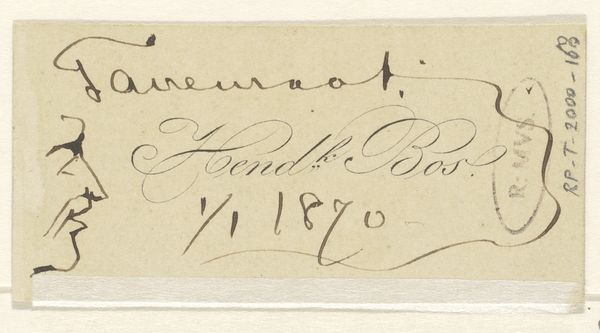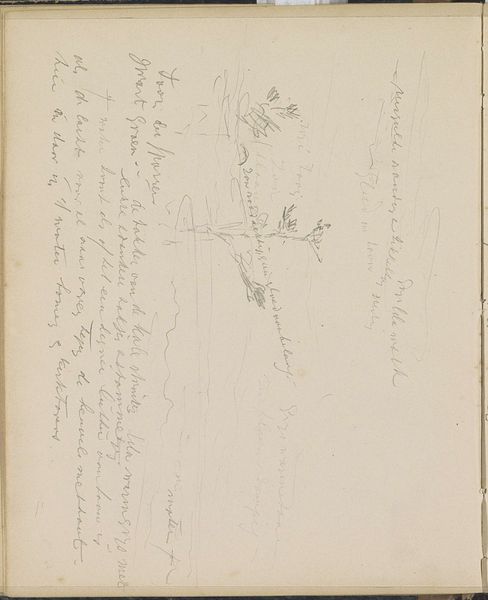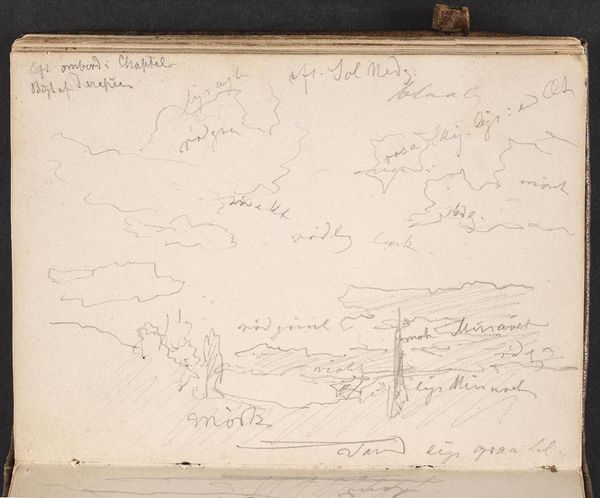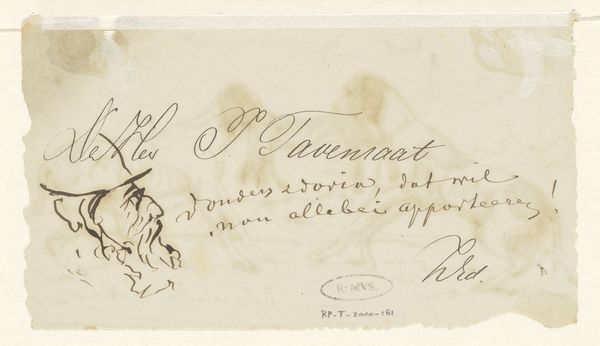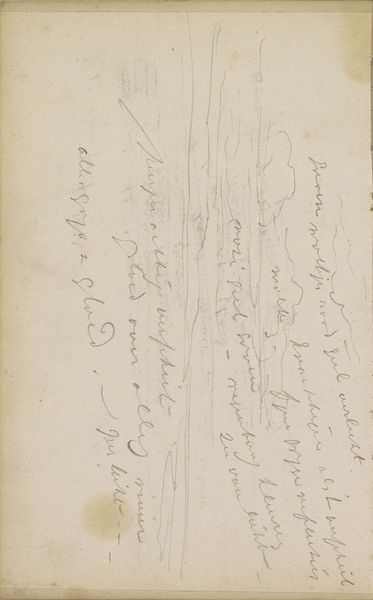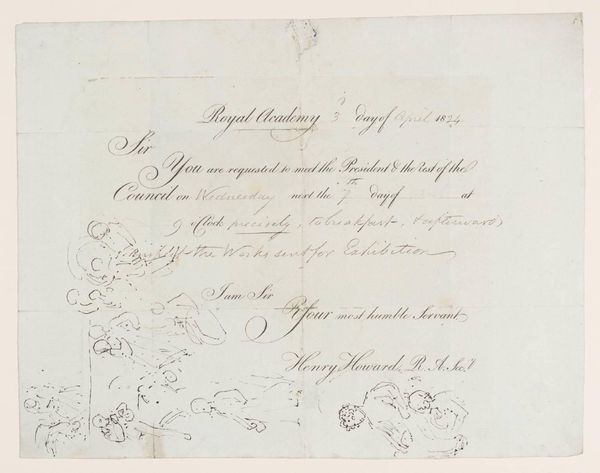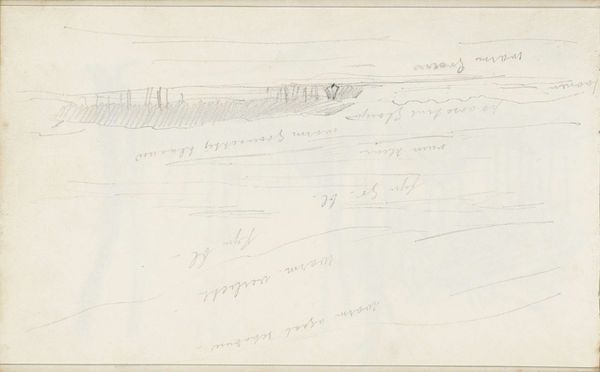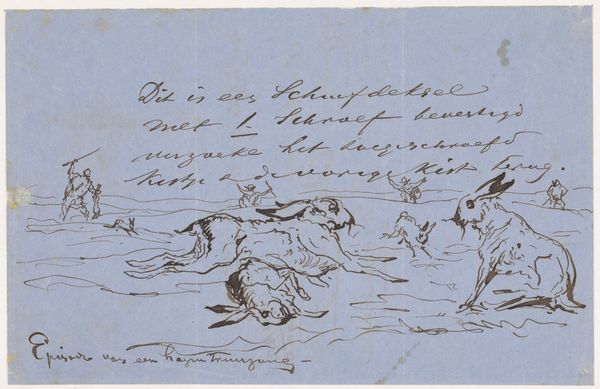
Dimensions: height 45 mm, width 83 mm
Copyright: Rijks Museum: Open Domain
Curator: Here we have Johannes Tavenraat's "Rivierlandschap met molen en sloep," dating from possibly 1870 or 1871. It’s a quick sketch using pen and ink. Editor: It looks like a page torn from a sketchbook. There's something very immediate about it. What stands out to you about this seemingly simple landscape? Curator: It’s interesting to consider this "simple landscape" within its material and social context. Pen and ink sketches, readily reproducible, played a crucial role in disseminating images of the Dutch countryside. These weren’t just aesthetic exercises; they were commodities, images produced for consumption. Look at the windmill – not just a quaint feature, but a symbol of industry and land management, both shaping and being shaped by capitalist expansion. Editor: So, you’re saying we should think about this less as an individual artist expressing himself, and more as… a product? Curator: Precisely! The labor involved in creating this image, the materials used, the social function it served – these are all interconnected. Consider the paper itself: its source, production, and distribution. It becomes less about "artistic genius" and more about the material conditions that allowed this image to exist. Editor: That’s a really interesting way of looking at it. I guess I’m so used to focusing on the artist’s intention, but thinking about the whole production process… It makes me wonder who the intended consumer was, and what they hoped to gain from this image. Curator: Exactly! By examining the means of production and circulation, we can unravel the complex relationships between art, labor, and society. It’s about questioning those established hierarchies and appreciating the significance of materiality. Editor: I see. Thinking about art as a product, linked to specific processes and social functions. That’s a lens I'll definitely be using more often. Curator: Glad to hear it! It’s all about critically engaging with the object and unpacking its inherent layers of meaning.
Comments
No comments
Be the first to comment and join the conversation on the ultimate creative platform.
